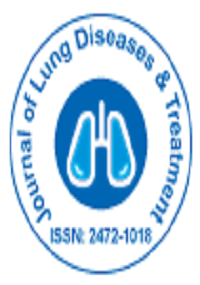Lung Diseases
Lung Diseases are the absolute most basic medical condition in the world. Smoking, infections, and genetics are main cause for lung diseases. The lungs are a piece of mechanical assembly, growing and loosening up a great many occasions every day to get oxygen and remove carbon dioxide. Lung infection can result from part of the lung.
Lung Transplantation
A lung transplant expels an individual's diseased lung and replaces it with a healthy one. The healthy lung originates from a benefactor who has died. Lung transplants are utilized for individuals who are probably going to die from lung diseases within 1 to 2 years. Their conditions are severe to different medications, for example, drugs or breathing gadgets, no longer work. Lung transplants regularly are utilized to treat individuals who have serious COPD, Cystic fibrosis, Idiopathic pulmonary fibrosis, Alpha-1 antitrypsin inadequacy and pulmonary hypertension.
Respiratory Infections
Respiratory Tract infection (RTI) includes various infectious diseases of the respiratory tract. An infection of this type classified as upper respiratory tract infection (URI or URTI) or a lower respiratory tract infection (LRI or LRTI).
Upper respiratory tract infections include pharyngitis, laryngitis, tonsillitis, and certain types of influenza, sinusitis, otitis media and the common cold. Lower respiratory tract infections include bronchitis and pneumonia
Asthma and allergy
Allergy occurs when the immune system in an individual responds to allergens which are substances in condition that don't cause issues for many people. This response prompts irritation (redness and swelling) that causes unfavorably susceptible conditions, which can influence different parts of the body, for example, hypersensitive rhinitis, skin inflammation or urticaria, hypersensitivity and asthma.
Individuals with asthma experience a narrowing of the airway routes in the lungs, which obstructs the stream of air into and out of the lungs.
Pathogenesis of COPD
Pathologic changes in chronic obstructive pulmonary disease (COPD) happen in the large (central) airway routes, the little (peripheral) bronchioles, and the lung parenchyma. Most instances of COPD are the consequence of introduction to noxious stimuli,, regularly tobacco smoke. The normal inflammatory response is enhanced in people inclined to COPD advancement. Increased quantities of activated polymorphonuclear leukocytes and macrophages discharge elastases in a way that can't be neutralized viably by antiproteases, bringing about lung destruction.
CO-Morbidities in COPD
Comorbidities like heart disease, hypertension, osteoporosis, diabetes mellitus and psychological disorders are generally reported in patients with chronic obstructive pulmonary disease (COPD). Tobacco smoking is a hazard factor for huge numbers of these comorbidities just as for COPD, making it hard to draw conclusions about the connection among COPD and these comorbidities.
COPD Exacerbations
Exacerbations drive wellbeing status and contribute to disease enhancement and exacerbation prevention is a key objective for treatment of COPD. Most of COPD exacerbations are activated by respiratory viral and bacterial infections.
Epidemiology of COPD
Chronic obstructive pulmonary disease (COPD) is a main source of world-wide mortality and disability. On average ∼5– 15% of adults in industrialized nations have COPD characterized by spirometry. In 1990, COPD was determined as at the twelfth position worldwide reason for consolidated mortality and disability but it is expected to be the fifth cause by 2020
COPD has an chronic long-lasting course with irreversible decrease of forced expiratory volume in one second (FEV1), increasing nearness of dyspnoea and other respiratory manifestations, and dynamic decay of wellbeing status. After analysis the 10-yr survival rate is ∼50% with more than 33% of patients dying because of respiratory inadequacy.
Management of COPD
COPD management plan includes
(1) evaluate and screen disease
(2) reduce risk factors
(3) manage stable COPD
(4) manage exacerbations.
Prevention of COPD
COPD can be prevented by avoiding tobacco exposure and toxic fumes. Vaccination against viral influenza and Streptococcus pneumoniae is prescribed.
Lung cancer
Lung cancer is a condition where cells multiply in the lungs uncontrollably. This causes the development of tumors that decrease an individual's capacity to breathe. This development can spread beyond the lung by the process of metastasis into close-by tissue or different parts of the body.
Interstitial Lung Disease
Interstitial Lung Disease is a general class that includes a wide range of lung conditions. All interstitial lung diseases influence the interstitium, a part of the lungs' anatomic structure.
Pulmonary Hypertension
Pulmonary hypertension is a kind of hypertension that influences the supply routes in your lungs and the right side of your heart.
Cardiovascular Risk and COPD
Individuals with chronic obstructive pulmonary disease(COPD) have a higher inclination and mortality from cardiovascular diseases, and diminishing cardiovascular mortality is the target region for decreasing mortality in individuals with COPD.
Therapeutic Devices & Evaluation
The common lung function tests are Spirometry, Chest X-ray, CT scan, Arterial blood gas analysis, Ventilation perfusion scan, Endobronchial Ultrasound (EBUS), Exhaled Nitric Oxide Test, Methacholine Challenge Test and many more.
Pulmonary diseases-Treatment and therapies
Pulmonary, Critical care and Sleep
Pulmonary, Critical care and Sleep includes various diseases related pulmonary diseases, sleep disorders and its critical care
Occupational & Environmental lung Disease
Occupational & Environmental lung diseases are group of diseases caused by the inhalation of dust, chemicals, or proteins. The severity of the disease is identified with the material inhaled and the intensity of exposure.
Some of the Occupational Lung diseases are Asthma, Bronchiolitis Obliterans, COPD, Hypersensitivity Pneumonitis, Lung Cancer, Mesothelioma, Pneumoconiosis.
Some of the Environmental lung diseases caused by Arsenic, Asbestos, BCME, Beryllium, Cadmium, Chromium, Coal dust, Diesel exhaust, Indium lung, Nickel, Silica and Tobacco smoke etc
Conference Series Ltd is overwhelmed to announce the commencement of 9th International Conference on COPD and Lungs” to be held during August 19-20, 2019 in Tokyo, Japan. The upcoming conference will be organized around the theme "Every breath counts: Halt the rise of COPD".
COPD 2019 conference brings together individuals who have an interest in the field of Respiratory and Pulmonary Disease relating to diversified topics like COPD, emphysema, asthma, cystic fibrosis, lung cancer, other pulmonary diseases and therapeutics. It is a forum to explore issues of mutual concern as well as exchange knowledge, share evidence and ideas, and generate solutions.
Target Audience:
This event is suited to anyone with an academic or professional interest in COPD and its research; including Researchers, Senior scientists, Pulmonologists, Professors, Doctors, Nurses, Healthcare Professionals, Pharmacologists, Clinicians, Directors of Association and Societies, Postgraduate students and those who work in research and development of pharmaceuticals and related technology.
Scope and Importance:
Pulmonary health has a particular interest on the impact changes in respiratory care and the awareness is increasing every year, and therefore COPD 2019 encourages submissions from researchers based in USA, Europe and Asian countries.
The challenge of the field is to evaluate current promising interventions rigorously, address emerging issues such as synthesizing ever-increasing research findings, and develop innovative dissemination and communication strategies.
COPD 2019 provides a platform that helps authors to share their knowledge with a wider audience, and sustains a rapid process for submissions resulting in high quality publications. We further aim to contribute towards reducing the inequity in publications from low- and middle-income countries. Our audience is global and we intend to share research results in COPD from all parts of the world.
Why to Attend?
-
Opportunity to meet world’s Pulmonology Experts
-
Keynote forums by renowned Physicians & Professors
-
Plenary talks and Poster presentations by global experts
-
Best platform for Global business and networking opportunities
-
Oral & Poster presentations by Young Researchers
-
Best poster & Young Research Forum awards
Who to attend?
Faculty Members and Researchers:
-
Keynote Speech
-
Plenary Speech
-
Poster Presentation
-
Symposium (4-5 member team)
-
Workshop
Universities, Associations & Societies:
-
Association Partnering
-
Academic Partnering
-
Group Participation
Students and Research Scholars:
-
Poster Competition (Best Poster Award)
-
Young Researcher Forum (YRF Award)
-
Group Participation
Business Delegates:
-
Speaker Presentations
-
Symposium hosting
-
Book Launch event
-
Networking opportunities
-
Audience participation
Product Manufacturers:
-
Exhibitor and Vendor booths
-
Sponsorship opportunities
-
Product launch
-
Workshop
-
Scientific Partnering
-
Marketing and Networking with clients
Major COPD Research Associations around Asia Pacific
COPD Patient Organization of Vietnam
COPD Patients Club Kyrgyzstan
COPD Club of Northern Thailand
Asian Pacific Society of Respirology
Chinese COPD Patient Education Organziation
Major COPD Research Associations around Globe
Alpha-1 Foundation
American Association for Respiratory Care
American College of Chest Physicians
American College of Emergency Physicians
American College of Physicians
American Lung Association
Canadian Lung Association (CLA)
COPD Foundation
Target Audience:
• Directors, Board Members, Presidents, Vice Presidents, Deans and Head of the Departments
• COPD Students, Scientists, Faculty
• Medical Colleges
• COPD Associations and Societies
• Business Entrepreneurs, Pharmaceutical companies
Universities Associated with COPD 2017
Major Universities on COPD Research
Kumamoto University, Japan
Tokyo National Hospital, Japan
KindaiUniversity, Japan
Okayama University, Japan
Medi7 Bentleigh, Australia
Macquarie University, Australia
Australian national university, Australia
Charles Darwin University Casoria Australia
Curtin University Bentley, Australia
Dar Al Uloom University, Saudi Arabia
Iqbal Chest Centre, Bangladesh
Imperial College London, United Kingdom
Linnaeus University, Sweden
University Of California Los Angeles, United States
Columbia University Medical Center, United States
Harvard University, United States
Global Market research on COPD
The global COPD market is estimated to currently be worth $11.3 billion, and is forecast to reach
a value of $15.6 billion by 2019. The drugs driving this growth include once-daily LABA/LAMA
fixed-dose combinations such as QVA-149, umeclidinium bromide/vilanterol and olodaterol/tiotropium.
The opportunity in the U.S. and China asthma and COPD drugs market is slated to rise from a valuation of US$13.0 bn in 2015 to be worth US$18.7 bn by 2024. If these values hold true, the market is likely to expand at a modest CAGR of 4.1% therein.
North America leads the global market for asthma &COPD drugs and devices. North America was followed by Europe in terms of market capitalization. Asia Pacific is expected to be the fastest regional market for asthma and COPD owing to the increased incidence of asthma & other respiratory diseases in industrial regions.
The current asthma and COPD market is primarily driven by increasing patient population. It is also growing due to factors such as price erosion and expiry of patents of leading drug brands in the market. However, it is estimated that in the next five years, the global asthma and COPD drug market is expected to grow slowly and steadfast. The COPD segment was projected to be worth USD 10,593.2 million and is expected to reach USD 12,619.8 million in 2017.
In Europe, LABA / ICS combinations and LTA (Montelukast) drugs are more popular for asthma and COPD treatment.
Top few companies in this global market:
AstraZeneca
GlaxoSmithKline
F. Hoffmann-La Roche
Novartis and Merck
Abbott
Amgen
Actavis
Boehringer Ingelheim
Cipla
Glenmark
Pfizer
Ranbaxy
Sunovion
Vectura
Global COPD & Asthma Devices Market, By Product
Inhalers
Nebulizers
Inhalers accounted for the major market and is expected to continue its dominance till 2020
Global COPD & Asthma Devices Market, By Geography
North America
Europe
Asia-Pacific
LAMEA
LAMEA region would exhibit the highest CAGR of 4.9% during 2017-2020












